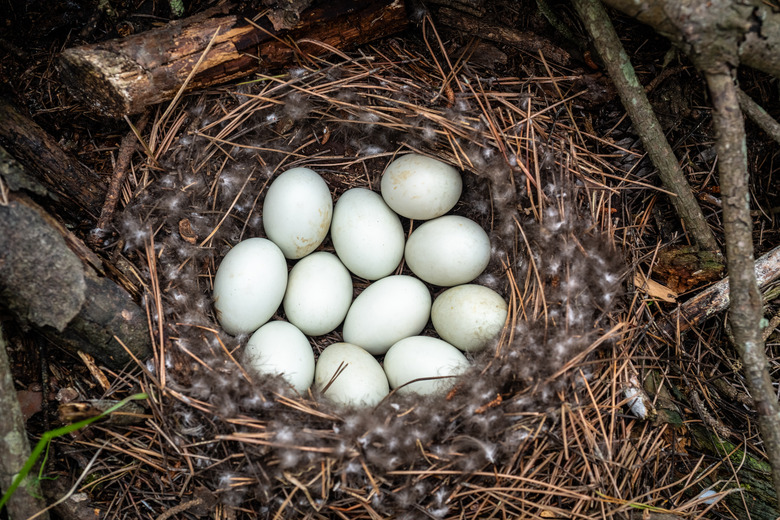How To Make A Homemade Incubator For Duck Eggs
The cost of a commercially made incubator for duck eggs could run into the hundreds–or even thousands–of dollars. If you just want to hatch a dozen or more duck eggs at a time, then consider making your own incubator. Expect about 50-percent hatching success with a homemade incubator, the University of Illinois Extension advises, but know that commercial hatcheries even with all their sophisticated equipment average only about 80 percent.
Step 1
Turn the aquarium on its side with the open end facing you. Cut the Plexiglas so it is slightly wider than the aquarium opening and about an inch higher.
Step 2
Place the Plexiglass in front of the aquarium to form a door and tape it in place on just the top edge, forming a tape hinge.
Step 3
Screw one light bulb into the lamp and set the lamp inside the incubator with the cord strung through a corner of the door. Plug in the lamp and turn it on. Position the thermometer so you can read it with the door closed. Wait about 10 minutes and check the temperature inside the incubator. If it's 102 degrees Fahrenheit, then proceed to step 5.
Step 4
Try the other light bulbs, if needed, to get your incubator to 102 degrees.
Step 5
Add a bread pan with a wet sponge to the back of the aquarium. This will provide the needed moisture inside the incubator. Place the hygrometer near the door so that it too is visible without opening the door. If the humidity goes above 65 percent relative humidity or goes below 60 percent relative humidity, squeeze out the sponge or add more water to it to maintain the moisture within that range.
Things Needed
- 20-gallon aquarium
- Sheet of Plexiglas
- Duct tape
- Small lamp that holds up to a 75-watt bulb
- 40, 60, and 75-watt light bulbs
- Thermometer
- Bread pan
- 4 inch by 8 inch by 1½ inch sponge
- Hygrometer
TL;DR (Too Long; Didn't Read)
Because even a variation of one degree could make a critical difference to your growing ducklings, "Mother Earth News" recommends using three or four thermometers in your incubator and averaging the readings to get a more precise idea of the actual temperature.
Cite This Article
MLA
Wolters, Ann. "How To Make A Homemade Incubator For Duck Eggs" sciencing.com, https://www.sciencing.com/make-homemade-incubator-duck-eggs-6182832/. 22 November 2019.
APA
Wolters, Ann. (2019, November 22). How To Make A Homemade Incubator For Duck Eggs. sciencing.com. Retrieved from https://www.sciencing.com/make-homemade-incubator-duck-eggs-6182832/
Chicago
Wolters, Ann. How To Make A Homemade Incubator For Duck Eggs last modified March 24, 2022. https://www.sciencing.com/make-homemade-incubator-duck-eggs-6182832/
